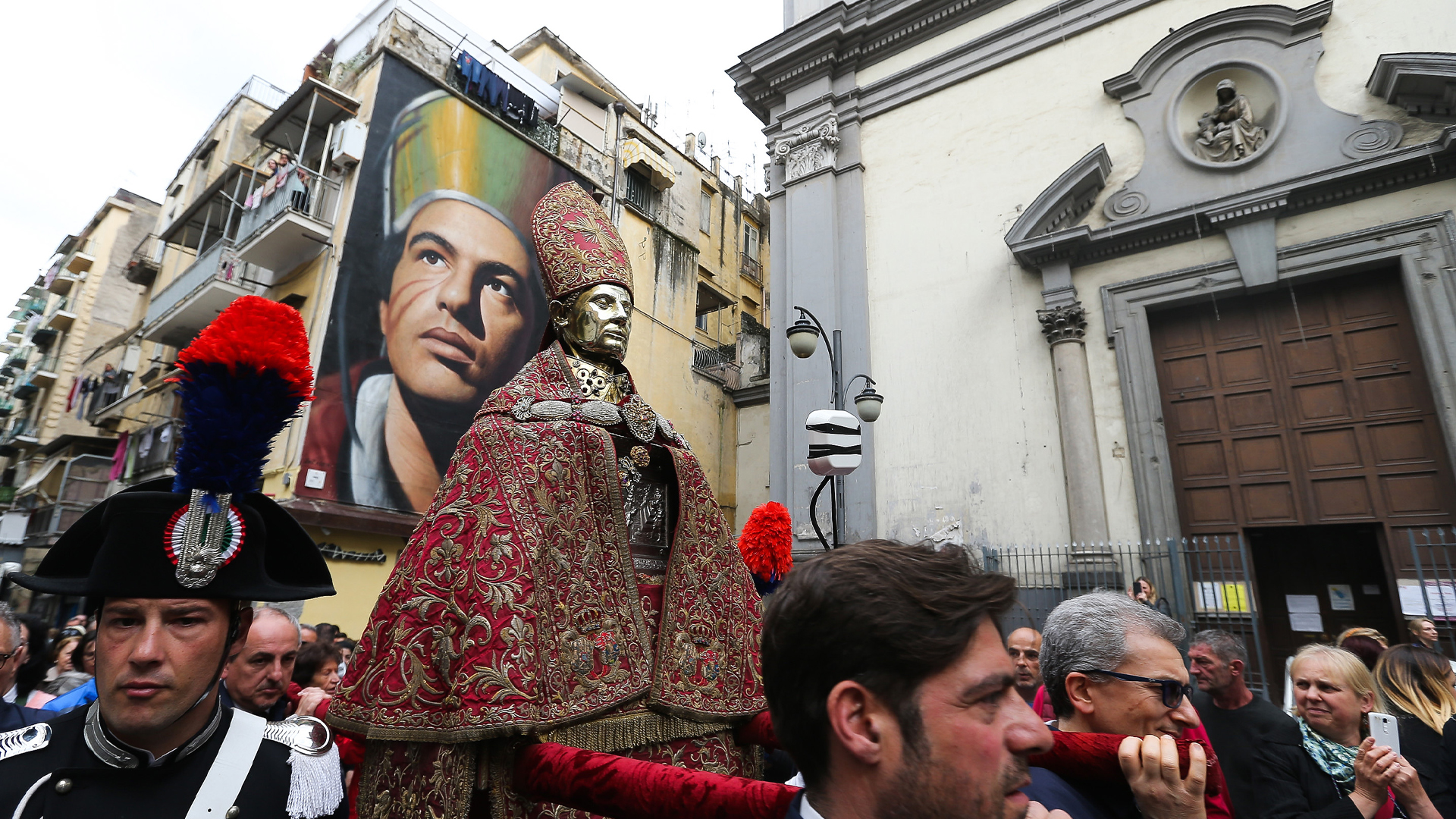A guide to learning about who the patron saint of Napoli is and the story behind New York's largest Italian festival
San Gennaro is one of the patron saints of Naples, Italy and his feast day is celebrated each year on September 19th in Italy and beyond. When you hear the name San Gennaro, you might be transported to memories of street festivals and the delicious smell of zeppole, sausage and peppers. In Italy, San Gennaro is profoundly connected to the history, tradition, and religion of Naples. But who was San Gennaro and why do we celebrate this famous saint?
San Gennaro (Saint Januarius) was born in Benevento, Campagna around 272 AD. He became the Bishop of Benevento during a pagan time and while in prison to visit two incarcerated brothers Gennaro was forced to confess his faith and sentenced to death at the peak of Christian persecutions. On September 19, 305 at the direction of Emperor Diocletian, Gennaro was beheaded near Pozzuoli’s Solfatara in a place that was called Foro di Vulcano. The punishment was initially set for Gennaro to be eaten alive by the animals at the Anfiteatro Flavio in Pozzuoli. However, legend has it, that the death sentence was changed to decapitation because Gennaro managed to calm down the beasts that were supposed to kill him. After he was martyred a woman named Eusebia saved two vials of his blood.
Three times a year the vials of the San Gennaro’s dried blood are put on public display at the Duomo di Napoli and the faithful anxiously pray and await for its liquefaction, known as the “Miracle of San Gennaro”. If the blood liquefies, it is regarded as a good omen for the city of Naples in the year to come. In Napoletano dialect, you’ll often hear people say, “Ha fatto o’miracolo!”. If the blood fails to liquefy it signals impending disaster including war, famine, or disease.
Around the year 431, the “miracle of San Gennaro” is believed to have happened for the first time. During a procession carrying the saint, there was a stop to rest and the preserved vials of the saint’s blood were placed near the martyr’s head. At that moment the blood began to melt. All those present considered this a miracle. Centuries later, San Gennaro’s relics and vials were moved to a crypt underneath the Duomo di Napoli where they still remain today.
The Feast of San Gennaro in New York City first took place in 1926 organized by immigrants from Naples, Italy, who settled along Mulberry Street in the Little Italy neighborhood of Manhattan. The festival was a way for immigrants to continue the tradition of honoring their beloved patron saint in their new home. The festival happens in mid-September every year and is centered around the saint’s feast day. A celebratory feast day mass is held at the Most Precious Blood Church on Baxter Street in Little Italy. This church is the National Shrine Church of San Gennaro in the United States. During the Feast of San Gennaro, the saint’s statue is taken from its home within the church on a procession through the streets of the neighborhood, emblematic of the same tradition in Naples.
This feast has become New York City’s longest-running street festival and has grown to be an 11-day affair. The streets of Little Italy are decorated with festive banners and arches that honor the colors of the Italian flag. For generations, the Feast of San Gennaro has remained an integral part of the culture of Little Italy and Lower Manhattan, representing San Gennaro as well as the Italian community, culture, and traditions.
Arianna DiCicco
Arianna DiCicco is an educator and writer from California, born into an Italian American restaurant family with strong ties to her grandparents’ home in Abruzzo, Italy. She has lived in San Francisco, Rome, and New York City where she’s made deep connections within the Italian communities and gained new perspectives about her own culture. With a Master's in International Education, Arianna has a love and passion for learning and educating others about Italian history & culture.

